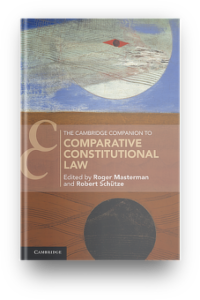Constitutionalism is the set of ideas that defi nes what a constitution is or ought to be. For some, there exists an essential core meaning of the term; while for others, the concepts of ‘constitution’ and ‘constitutionalism’ have fundamentally changed over time.
Various conceptions of constitutionalism have indeed developed in legal history. According to a descriptive constitutionalism, a constitution is the factual description of the institutions and powers of government. By contrast, a normative constitutionalism insists that constitutions do not merely describe the existing governmental structures, but rather prescribe their composition and powers. From a formal point of view, constitutional laws are thus those norms that, as the highest laws within a society, stand above the government. 4 This formal defi nition has, in the last two hundred years, competed with a material understanding of what a constitution ought to be. This material constitutionalism links the legal concept of the constitution with a particular political philosophy that is meant to legitimize the constitution. According to a ‘democratic’ constitutionalism, a genuine constitution thus only exists where it is based on the idea of a ‘government of the people, by the people, for the people’. A ‘liberal’ constitutionalism, on the other hand, believes that a constitution is only a ‘true’ constitution if it sets limits to the powers of government, and the two traditional constitutional limits here are the separation of powers and fundamental rights.
The various ‘constitutionalisms’, and their relations to each other, can be seen in Figure 2.1 ; and the aim of this chapter is to briefl y introduce them ( Sections 2 – 4 ). The main purpose behind this chapter is thus to sensitize the reader to the fact that the many constitutional phenomena discussed in this book are not only geographically variant but that the very idea of what counts as constitution is historically constructed and will often be infl uenced by a pre- commitment to a particular constitutional theory. The most prevailing element of any constitutional theory in the past three hundred years has thereby been the link between the idea of a constitution and that of the modern (unitary) state. Yet as Section 4 hopes to show, the state- centred idea of a constitution cannot explain federal unions, such as the (early) United States or today’s European Union, in which there are two levels of government making a constitutional claim over the same people(s).
